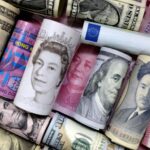By Andrew Moran
Treasury Secretary Scott Bessent said the Trump administration is poised to reveal “substantial” tariff actions in the coming days.
Bessent, appearing on “Fox and Friends” on Nov. 12, stated that tariff-related decisions would be unveiled that could help provide relief to Americans facing higher costs for coffee and other grocery items that are not produced domestically.
“You’re going to see substantial announcements over the next couple of days in terms of things we don’t grow here in the United States,” Bessent said. “Coffee being one of them, bananas, other fruits. Things like that. So that will bring the prices down very quickly.”
He stopped short of disclosing which authorities the White House could employ.
A broad array of tariff-sensitive supermarket items has seen higher costs this year, according to the latest Consumer Price Index released by the Bureau of Labor Statistics last month.
Prices for coffee—primarily imported from Brazil, Vietnam, and Colombia—have surged by 19 percent year over year.
This year, the United States imposed hefty levies on major coffee importers, such as Brazil and Colombia. In addition to levies, challenging growing conditions in the South American countries have contributed to higher consumer prices.
Coffee futures slid by more than 3 percent on the U.S. ICE Futures exchange after Bessent’s remarks. Shares of Starbucks also rose by more than 2 percent.
Bananas have jumped by nearly 7 percent year over year. The fruit is imported primarily from Latin American countries, particularly Ecuador, Guatemala, and Costa Rica. Like coffee, extreme weather conditions and higher product costs have led to rising prices.
Canned fruits have also increased by about 5 percent over the past 12 months, with the United States importing them primarily from East Asia, particularly from China, Vietnam, and South Korea. Higher metal and ingredient tariffs, packaging costs, and crop disruptions have fueled the increase.
Overall, prices at grocery stores ticked up by 0.3 percent in September and have risen by 2.7 percent year over year.
President Donald Trump also stated that his administration would begin lowering some tariffs.
In an interview with Fox News host Laura Ingraham that aired on Nov. 11, Trump suggested he was restoring affordability, dismissing critics’ complaints about higher food costs.
“Their talking points, ‘Oh, costs are high, costs are high,’ the only thing is beef,” he said.
“Beef is a little high because the ranchers are doing great,“ he continued. ”Coffee, we’re going to lower some tariffs, we’re going to have some coffee come in.”
Beef inflation has risen by approximately 15 percent, with sub-categories climbing even faster in the latest Consumer Price Index. The average price for beef has climbed to $6.33 per pound.

Shrinking cattle herds, higher feed and labor costs, and poor grazing conditions have driven the trend.
The president last month proposed importing more Argentine beef to provide relief for shoppers.
Restating the Case for Tariffs
Trump unveiled the contours of his expansive trade agenda in April, introducing reciprocal tariffs on U.S. trading partners. Since then, the administration has reduced many of these tariff rates, established trade agreements with other countries, and announced other sectoral levies.
However, his tariff efforts could hit a roadblock as the Supreme Court considers whether Trump is using tariffs as an illegal tax and exceeded his authority under the International Emergency Economic Powers Act in implementing his global tariff plans.
U.S. officials say if the high court blocks these levies, the administration has other tools at its disposal.
Bessent noted that while higher import duties could raise trillions of dollars in revenue over the next decade, that is not the principal objective of the tariffs.
“Over the course of the next few years, we could take in trillions of dollars. But the real goal of the tariffs is to rebalance trade and make it more fair,” Bessent told ABC’s “This Week” on Nov. 9.
“What would happen over time is, we would take in substantial money as factories come back to the U.S.,” he continued. “Tariff income will be substantial at the beginning, it will come down, and then domestic tax revenues will climb as corporate taxes go up and all these high-paying jobs are created.”
Bessent, a former Wall Street billionaire hedge fund manager, repeatedly touted that Trump’s tariffs aim to make the United States a leading global producer and ensure the rest of the world, mainly China, is a consumer.
At the end of fiscal year 2025, the U.S. government collected more than $215 billion in tariff income, according to the Daily Treasury Statement. In the first six weeks of the fiscal year 2026, Washington has generated $36.2 billion in tariff revenue.
In August, the nonpartisan Congressional Budget Office estimated that the president’s tariffs could reduce the primary deficit by $3.3 trillion and lower interest charges by an additional $700 billion.





